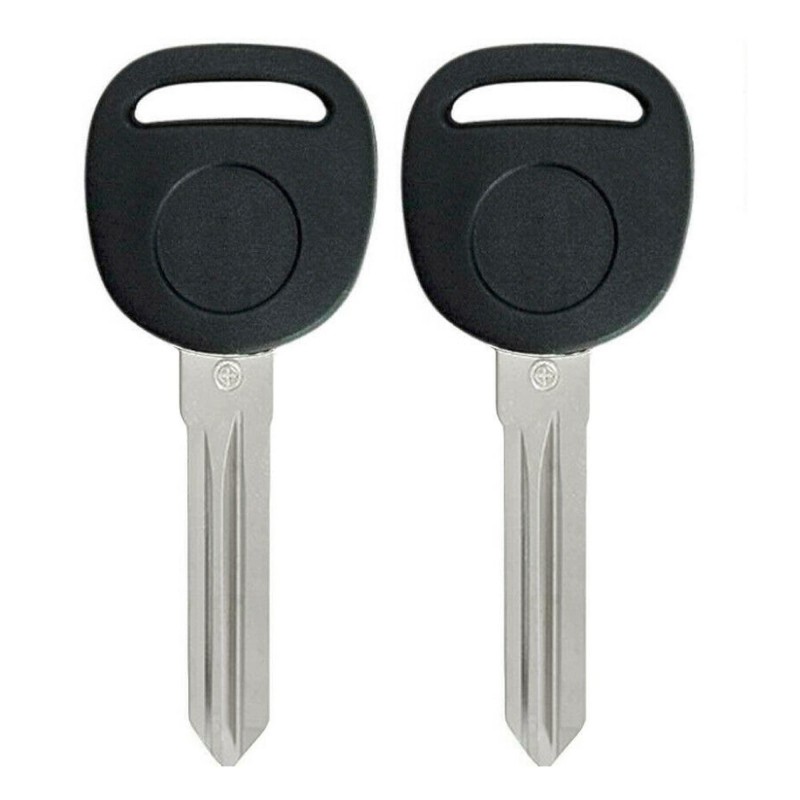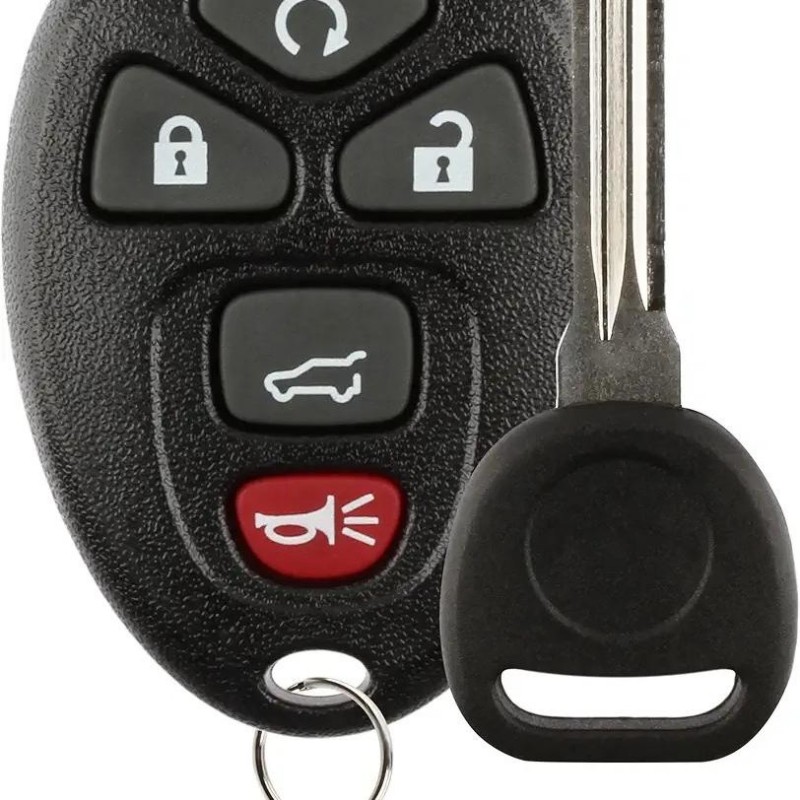In recent years, car transponders have become a critical component of vehicle security systems, providing a sophisticated means to deter theft and enhance overall convenience for drivers. These electronic devices play a pivotal role in the communication between a vehicle and its key. Ensuring that only authorized users can gain access to the vehicle and start the engine. As automotive technology progresses, transponders have evolved alongside advancements in security features, contributing to the development of smart keys and keyless entry systems. This article will provide an in-depth exploration of car transponders. Examining their functionality, types, applications, and how they have transformed the automotive industry. We will also delve into future trends and innovations that will shape the role of transponders in vehicles moving forward.

What is a Car Transponder?
A car transponder is an essential security component embedded within a vehicle’s key or key fob that communicates with the vehicle’s ignition system. Transponders utilize radio frequency identification (RFID) technology. Which allows them to send and receive signals when the key is within close proximity to the vehicle. The most notable aspect of a transponder is its unique code—an identification number that is programme into both the key and the car’s ignition system.
The transponder works with a dedicated antenna located near the ignition switch. When the driver inserts the key or comes within range of the vehicle with a key fob, the antenna emits a low-frequency signal that activates the transponder in the key. The transponder then sends its unique code back to the vehicle. If the code matches the one stored in the car’s onboard computer, the vehicle’s security system is disarmed, and the engine can be started. This two-way communication process significantly enhances vehicle security by preventing unauthorized access.
Types of Car Transponders
Car transponders can be classified into several categories based on their functionality and implementation. Understanding these types will help car owners appreciate the technological advancements that contribute to vehicle security:
Passive Transponders: These are the most common type of car transponders. They do not have their own power source but are activated when the key is in the vicinity of the vehicle. Passive transponders are often found in modern ignition keys and key fobs. They are designed to enhance security by only allowing the engine to start when the correct key is present.
Active Transponders: Unlike passive transponders, active transponders are equipped with a power source, usually a battery. These are typically more advanced, providing additional features such as remote start and advanced keyless entry. Active transponders can communicate over greater distances and are often seen in high-end vehicles.
Smart Keys: Smart keys represent the latest generation of keyless entry systems. They integrate advanced transponder technology with additional features like push-button start, remote engine start, and keyless access. Smart keys communicate with the vehicle at a distance, allowing the driver to unlock or start the car without physically interacting with the key fob.
Transponder Chips: Some vehicles utilize simple transponder chips embedded in traditional keys. These chips are designed to send a unique signal to the car’s engine control unit (ECU). When the correct signal is detected, the ECU allows the ignition to start. Simple transponder keys offer a lower-cost security solution while still providing a basic level of protection.

How Car Transponders Work
The operation of a car transponder involves a series of steps that ensure secure communication between the key and vehicle. Here’s a detailed look at how this process functions:
- Signal Emission: When the driver approaches the vehicle with the key fob or inserts the key into the ignition, the vehicle’s antenna emits a low-frequency radio signal. This signal activates the transponder chip within the key.
- Signal Reception: The transponder chip in the key receives the signal and is energized, prompting it to respond with its unique identification code.
- Code Transmission: The transponder sends the code back to the vehicle, typically using a higher-frequency radio signal. This communication occurs within seconds, allowing for quick accessibility.
- Verification: Upon receiving the code, the vehicle’s onboard computer compares it to the stored codes in its memory. If they match, the ignition system is disengaged, allowing the driver to start the engine.
- Security Protocol: If the codes do not match, the vehicle’s security system remains active, preventing unauthorized attempts to start the engine. In many vehicles, such unauthorized attempts may trigger an alarm or immobilize the vehicle further.
This two-way communication enhances vehicle security significantly compared to traditional key systems, making it difficult for thieves to bypass the ignition system and start the vehicle without the original key.

The Benefits of Car Transponders
The integration of transponder technology into vehicles offers numerous advantages, which have transformed how we approach vehicle security:
Enhanced Security: The primary benefit of car transponders is their enhanced security features. With unique identification codes associated with each key, the chances of unauthorized access are drastically reduce. Thieves may find it nearly impossible to start a vehicle without the correct key or fob.
Convenience: Car transponders provide significant convenience through keyless entry systems. With smart keys, drivers can unlock their vehicles and start the engine without physically inserting a key. Enabling seamless access and efficiency.
Reduced Insurance Costs: Vehicles equipped with transponders and advanced security features may benefit from lower insurance premiums. Insurers often view these features as a deterrent against theft, leading to decreased risk and lower rates for policyholders.
Remote Functionality: Many modern car transponders come with remote functions, such as the ability to lock/unlock doors, remote start the engine, and activate alarm systems—all from a distance. This functionality enhances user experience and adds a layer of protection for the vehicle.
Durability and Longevity: Unlike traditional mechanical keys that can wear out over time, transponder keys are more durable and maintain their functionality longer. The electronic components within modern keys can withstand extensive use without degrading, leading to greater longevity.
Challenges and Limitations of Car Transponders
While car transponders offer significant advantages, there are also challenges and limitations associated with their use:
Cost of Replacement: If a car key containing a transponder chip is lost or damaged, replacement can be costly. Vehicle owners may need to visit a dealership for a new key, which requires programming to match the vehicle’s onboard system.
Complexity in Repair: If a car’s transponder system malfunctions, it can lead to significant frustration. Diagnosing issues may require specialized tools and expertise, often resulting in higher repair costs and more extended time spent without the vehicle.
Potential for Cybersecurity Threats: As cars become increasingly connected, they become vulnerable to cyber threats. Hackers could potentially exploit vulnerabilities in the transponder systems, which could lead to unauthorized access or control of the vehicle.
Battery Dependency: Active transponder keys and remote entry systems typically rely on batteries. If the battery dies, the key may become inoperable until it is replaced, leaving the driver unable to access or start the vehicle.
Environmental Factors: External factors, such as proximity to other electronic devices or extreme weather conditions, can occasionally interfere with the signal transmission between the key and vehicle. This can result in frustration for drivers who may face difficulties accessing their vehicles.

Innovations and Future Trends in Car Transponder Technology
The automotive industry continues to innovate, leading to advancements in car transponder technology. Here are some notable trends to watch for in the near future:
Integration with IoT: As vehicles become more connected, car transponders will likely integrate with the Internet of Things (IoT). This integration could lead to improved tracking capabilities, enhanced security features, and more comprehensive vehicle diagnostics.
Biometric Security: Future vehicle transponder systems may incorporate biometric security measures, such as fingerprint recognition or facial recognition, providing an additional layer of security. These innovations could enhance user convenience while further mitigating the risk of unauthorized access.
Advanced Encryption: To counter potential cybersecurity threats, new transponder technologies may prioritize advanced encryption methods. Using stronger cryptographic algorithms could protect the communication between key fobs and vehicles, making it even more difficult for unauthorized parties to intercept or hack the system.
Smartphone Integration: With the prevalence of smartphones, the automotive industry is increasingly exploring the concept of smartphone keys. These advanced transponders would allow drivers to use their mobile devices as keys, providing added convenience and security features.
Remote Key Programming: Innovations could emerge that allow for remote key programming. Enabling car owners to program new keys from their smartphones or through web platforms, providing a seamless key replacement experience.

Conclusion
Car transponders have revolutionized vehicle security, offering advanced features that protect against theft and enhance convenience for drivers. Their integration into modern vehicles has not only made it more difficult for unauthorized individuals to access vehicles but has also paved the way for smart key and keyless entry systems that streamline the driving experience.
Despite the challenges and limitations associated with car transponders, their benefits far outweigh the drawbacks. As technology evolves, we expect to see innovative trends that will further enhance vehicle security and improve user experience. From robust encryption protocols to the integration of biometric technology and IoT connectivity, the future of car transponders promises exciting possibilities.
By understanding how car transponders work, their benefits, and future trends, vehicle owners can make informed decisions about their security systems, ensuring their vehicles remain protected in an ever-evolving automotive landscape.